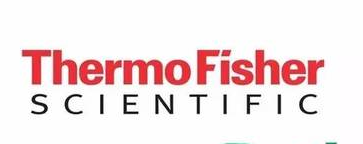



Thermo Fisher Scientific said recently that its third quarter revenues grew 16 percent, driven by growth across its four business segments.
"We continued our strong growth momentum and delivered another excellent quarter in Q3," said President and CEO Marc Casper during a conference call to discuss the firm's earnings.
Thermo Fisher reported $5.92 billion in revenues for the quarter, up 16 percent year over year from $5.12 billion and beating analysts' average estimate of $5.7 billion.
Casper said that revenues were strong across all of the company's end markets, including pharma and biotech, which grew by high-teen percentage points; diagnostics and healthcare, which grew by mid-single-digit percentage points; academic and government, which also grew by mid-single-digit percentage points; and industrial and applied sciences, which grew by high-single-digit percentage points.
Geographically, he singled out China as a region of particularly strong growth with revenues increasing more than 20 percent in Q3. Just a few years ago, there was limited life science research in China, he said, but today, the country is "a growing contributor to our results." Thermo Fisher has built a precision medicine and a cryo EM center in China to showcase its technologies and will open a new commercial office in Beijing next week, he added.
Revenues in Q3 grew across the company's four business segments. Life sciences solutions revenue increased to $1.50 billion, up 9 percent from $1.38 billion in Q3 of 2017. Organic revenues increased 10 percent. Growth in this segment was led by bioproduction, biosciences, and clinical next-generation sequencing.
Analytical instruments revenue grew 12 percent year over year to $1.33 billion from $1.19 billion in the prior-year quarter, led by growth across all businesses in this segment. Organic revenues also increased 12 percent.
The firm's specialty diagnostics revenue increased 6 percent to $890.0 million from $840.0 million in Q3 of 2017. Organic revenues rose 7 percent. Growth in this segment was driven by the company's healthcare market channel and by its transplant and clinical diagnostics businesses.
Finally, laboratory products and services revenue, which include the Patheon acquisition from August of 2017, rose 28 percent to $2.47 billion from $1.93 billion a year ago. Organic revenues in this segment grew 11 percent. Revenue growth was led by the clinical trials logistics business and by the research and safety market channel.